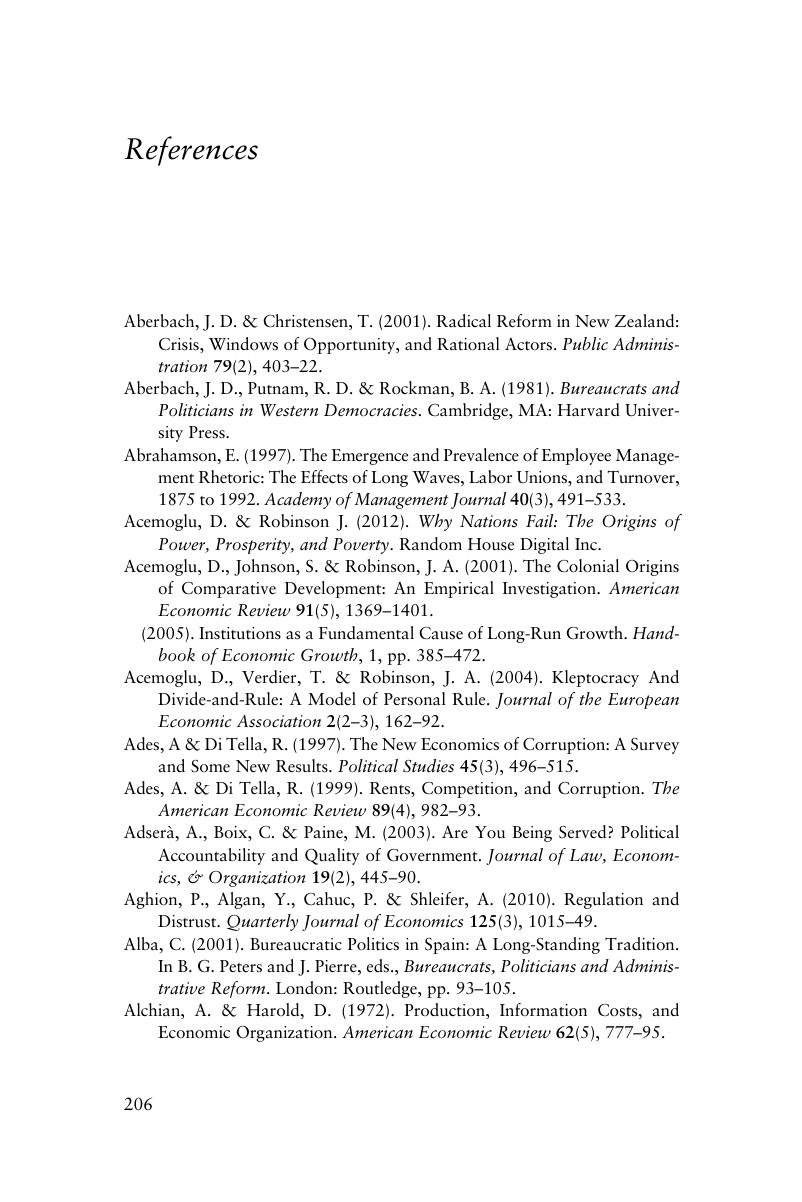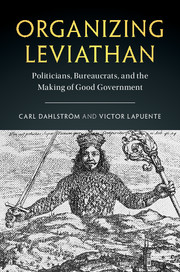References
Published online by Cambridge University Press: 15 June 2017
Summary

- Type
- Chapter
- Information
- Organizing LeviathanPoliticians, Bureaucrats, and the Making of Good Government, pp. 206 - 241Publisher: Cambridge University PressPrint publication year: 2017



